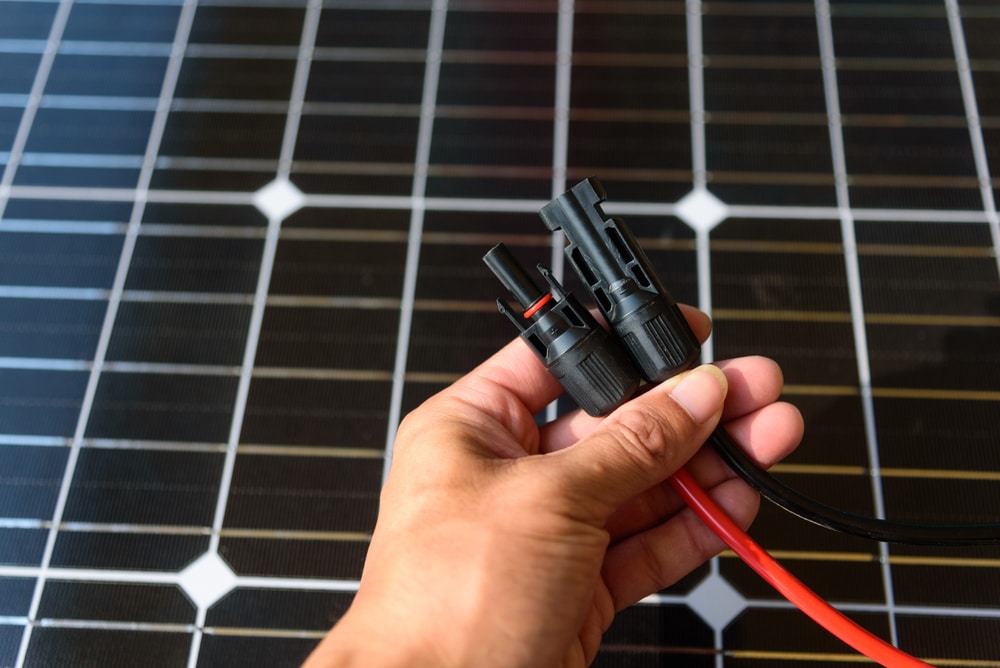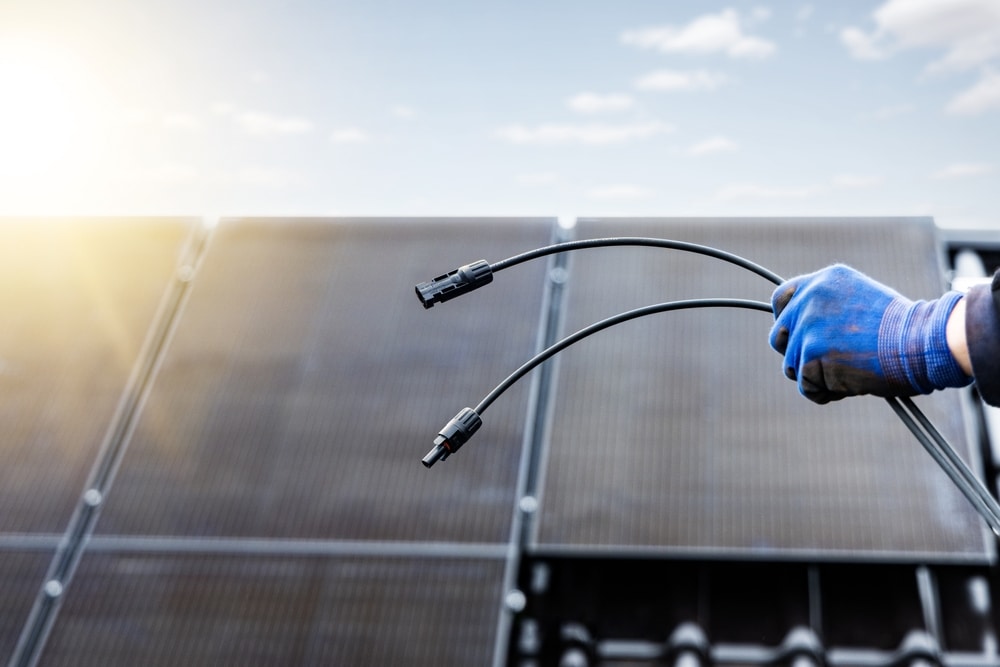Utility-scale solar installations have a lot of fragile parts and pieces. Small issues can result in thousands of dollars’ worth of lost energy, system damage, or even a fire.
According to HelioVolta’s SolarGrade PV Health Report, nearly 60% of solar installation issues were attributed to field-made connectors or wire management. Field-made connector issues alone attributed to one-third of all problems at solar sites. Within that segment, the percentage of critical and major issues attributed to field-made connectors was higher than any other damage type.
It’s fair to say connectors are a concern, but it helps to know when and how the connectors were made. Field-made connectors are installed on-site by workers, compared to factory-made ones attached to PV wire during production.
With that in mind, the blame then falls on either the connector or the worker who assembled it.
With so much money and energy on the line, companies must reduce liability and increase their installations’ reliability. Could factory-made connectors improve overall production and dependability?
The Difference Between Field and Factory-Made Solar Connectors
Companies have two options for connectors for a utility-scale solar power array: factory-made connectors or field-made solar connectors.
Factory-made connectors are installed onto the wire in a controlled environment. Performing the work in a manufacturing facility makes it easier to spot quality assurance (QA) and quality control (QC) issues so bad connectors aren’t sent out to the field.
When PV wire connectors are made in the field, they’re assembled by solar installers. Typically, field-made connectors are used to ensure connectors aren’t cross-mated with other “compatible” parts. During this process, workers use certified pieces and tools supplied by a manufacturer and then do the work themselves. The important thing to remember here is that both the parts and the tools are certified, meaning installers should only use what was supplied to them by the manufacturer.
Although several connector types exist on the market, some are more common than others. MC4 connectors, using a plug-and-socket method, are the current standard, and Swiss manufacturer Staubli is the original developer and manufacturer. Since the MC4’s inception, many other companies have started making their own compatible connectors, leading to a growing number of connector manufacturers and parts to choose from.
The problem is although there is a certification process for the connectors, cross-mated parts aren’t usually tested together as a single unit.
One Size Doesn’t Fit All
There are several types of connectors used in solar operations, including the MC4, MC3 (phased out by MC4), and Amphenol Helios models, but you can’t always use one with another.
While it might not seem like a big deal mixing and matching connectors across a solar site, HelioVolta noted in its SolarGrade report that pieces were either improperly installed or cross-mated in nearly 80% of field-made connector issues.
As installers rush to catch up with delayed projects and set up new sites, the resulting time crunch opens the door for mistakes. The industry is also growing, leading to an influx of junior installers who may not have enough experience to perform the job well.
What Does This Mean for Solar Sites?
Connector issues set the stage for several problems. From water and moisture exposure, bad PV connector points, and damaged wires from bad crimps or other mistakes, every issue could open the door to a costly disaster.
So, what happens when a PV system has connector issues? Quite a lot, actually:
- Lost power and outages – When connectors fail, the solar panel is no longer reliably connected to the Balance of System (BOS). When that happens, the system produces less energy.
- Ground faults or arcing – Ground faults and arcs occur when there isn’t good contact in the connector. Heat expands the parts over time, opening gaps and eventually creating an arc that can damage surrounding wires and materials.
- Fires – When fires break out, they can quickly cause millions of dollars in damage. Once the fire is out, crews need to replace damaged and charred parts, adding sunk time and labor costs to the total bill.
Not every field-made connector is an inherent fire risk, but they may carry more risk than factory-made parts, according to HelioVolta’s data.
Avoiding Connector Issues
Limiting the number of fail points is critical when dealing with large utility-scale installations.
Buying factory-made connectors addresses a crucial failure point, setting your solar energy project up for better long-term success.
According to the SolarGrade PV Health Report, only 6% of issues at solar arrays were tied to factory-made connectors, much less than the 33% associated with their field-made counterparts. Manufacturer-made parts also reduce on-site critical and major problems, thanks to each manufacturer’s rigorous QC and QA programs.
The Best Connector for the Wire
Another benefit of factory-made connectors is that manufacturers can use compatible products with their wire and cable. The result is a more reliable connection, thanks to a standardized process retaining integrity across the board.
Installers may rush or get stretched thin, limiting their attention, resulting in potentially loose or poor connections. Furthermore, unlike field-made connectors that may lack QA assurance from another worker in the field, most manufacturers have staff on hand to spot potential concerns before the wire leaves the factory.
What Do Bad Connectors Look Like?
No matter what type of connector is used, you should know what damage looks like.
We recommend having crews inspect solar sites once every 6 months or so and check every connection point for common problems, including:
- Gaps
- Cross-threading
- Sun Damage
- Overheating
- Other connector or wire damage
One of the easiest mistakes to make is using incompatible connectors. When connectors are cross-mated without checking for compatibility, it can put the solar installation at risk. Mismatched connections can generate a lot of heat, making them easy to spot with a temperature gauge.
It’s also important to ensure every installer is trained to properly work on solar panels, cabling and other balance of system (BOS) pieces.
Know What You’re Getting
Simply put – buying factory-made connectors reduces risk.
Manufacturers have strict quality control standards to prevent damaged or improperly assembled connectors from being shipped out to the field in the first place. If bad parts do get shipped, they can also work alongside customers to quickly correct mistakes before dangerous situations develop.
Not all field-made connectors will have issues, and many will be fine. But when the goal is to limit risk and liability on your renewable energy project, factory-made connectors are the way to go.



